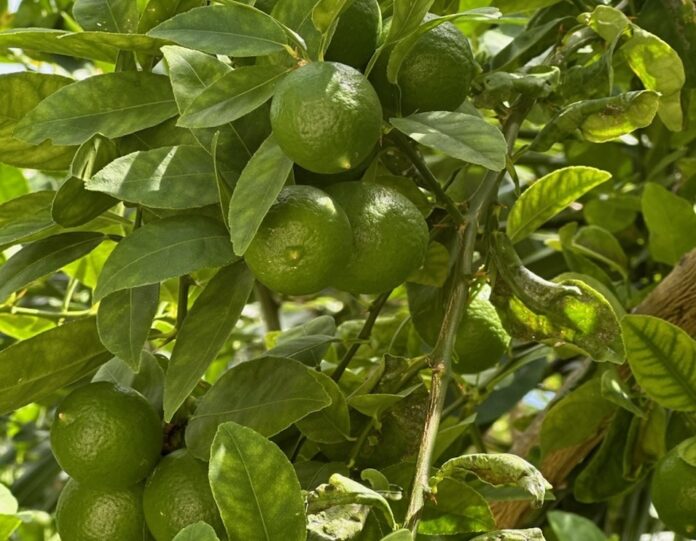With its tart and fragrant flavor, the Key lime is more than just a tropical treat; it’s a historical and agricultural treasure of the Florida Keys. Here’s a guide to growing, caring for and understanding this unique citrus fruit.
Nomenclature
The Key lime, scientifically known as Citrus aurantifolia Swingle, is also commonly referred to as West Indian lime, Mexican lime (Limón Mexicano), dayap (Filipino), manao (Thai), chanh (Vietnamese), limão galego (Portuguese), and tilleul clé (French). Like all citrus fruits, it belongs to the Rutaceae family.
A brief history of Key limes
The Key lime originated in Southeast Asia and is a tri-hybrid cross involving Citrus medica, Citrus grandis and Citrus micrantha. Carried to North Africa, Spain and Portugal, it was brought to the Americas by Spanish and Portuguese explorers in the early 16th century. The lime spread throughout the Caribbean, Mexico, Central America, South America and the Florida Keys.
Health benefits of Key limes
Key limes are rich in vitamin C, boosting the immune system, promoting healthy skin, aiding collagen production and reducing inflammation.
Choosing your Key lime tree
Select trees grafted onto rootstocks that can tolerate high-pH, calcareous soils like those found in the Keys. Suitable rootstocks for Key lime trees in such soils include a lemon (C. macrophylla), rough lemon (C. jambhuri), Volkamer lemon (C. volkameriana), and Rangpur lime (C. limonia).
Growing and caring for Key limes
Key lime trees are well-suited for the warm subtropical and tropical climates of the Florida Keys. However, they require specific care to thrive.
- Maintain a clear area of 2 to 5 feet around the trunk. Avoid using equipment near the tree trunk to prevent mechanical damage.
- Key lime trees’ roots extend beyond their canopy. Avoid heavily fertilizing; it can reduce fruiting and fruit quality. Overwatering can cause root rot.
- Apply a 2- to 6-inch layer of mulch, such as bark or wood chips, around the tree. Keep mulch 8 to 12 inches away from the trunk to prevent rot.
- Limited pruning is generally needed to shape the tree, remove dead wood and control height and width. Keeping your Key lime tree at 6 to 8 feet high and 10 to 12 feet wide reduces wind damage and makes maintenance easier.
- Dig a hole three times the container’s diameter and three times its depth in the shallow, calcareous soil. Use a pick or digging bar. For iron deficiency, apply 1 to 4 ounces of iron chelate to alkaline soils two to three times yearly.
- Harvest Key limes at any stage, green or yellow. Store in polyethylene bags in the fridge for up to a week, or freeze the juice for longer.
- The Key lime tree supports the larvae of the invasive lime swallowtail and the native giant swallowtail. While lime swallowtail is a severe pest of young citrus trees, native giant swallowtails depend on Key lime as a larval host.
- Key lime trees are prone to salt damage from saltwater and poor drainage, especially after hurricanes.
- Common diseases: Citrus canker causes leaf lesions, poor fruit quality, and Citrus greening (Huanglongbing), which leads to canopy dieback and tree death.
Whether enjoying a classic Key lime pie or simply savoring the fruit’s zest, the Key lime is a fascinating citrus fruit with a rich history and enduring appeal.





















